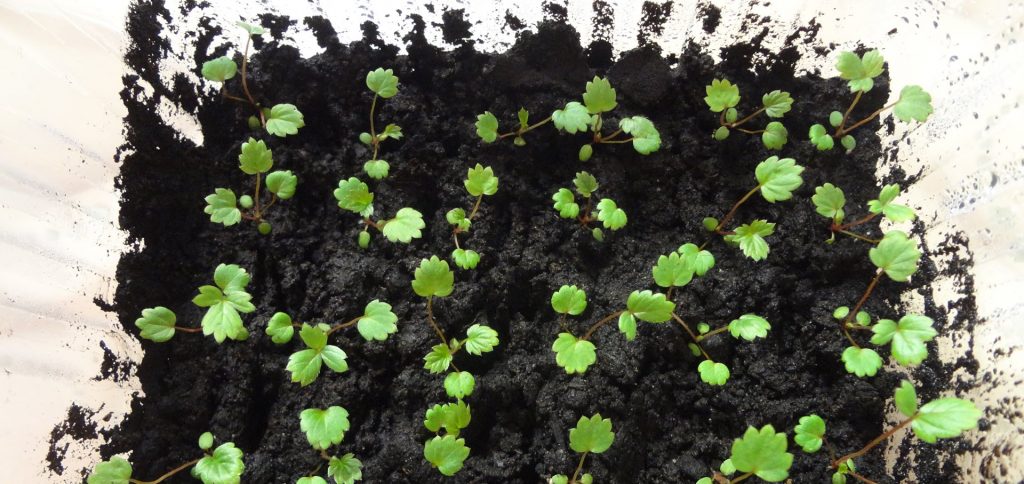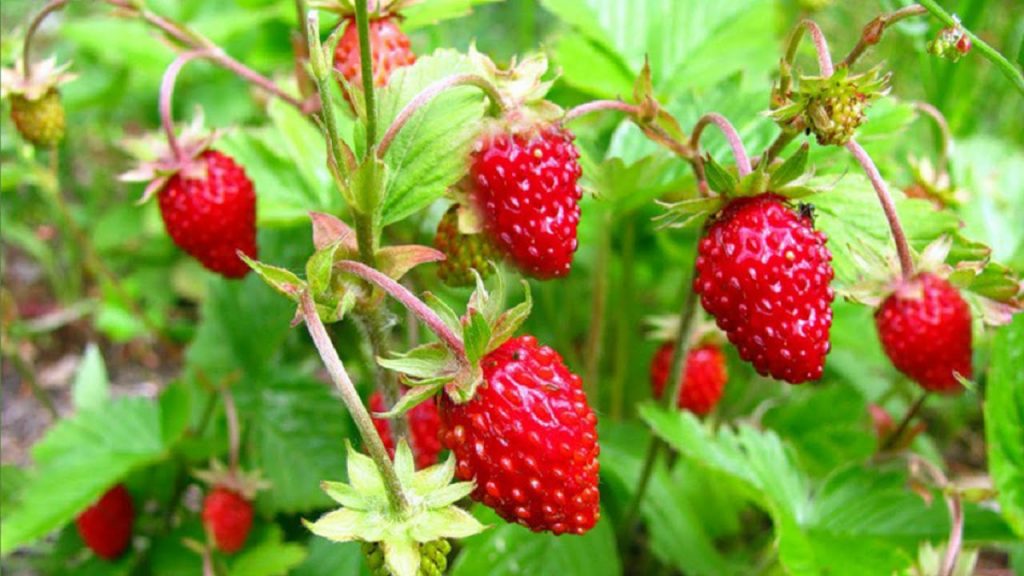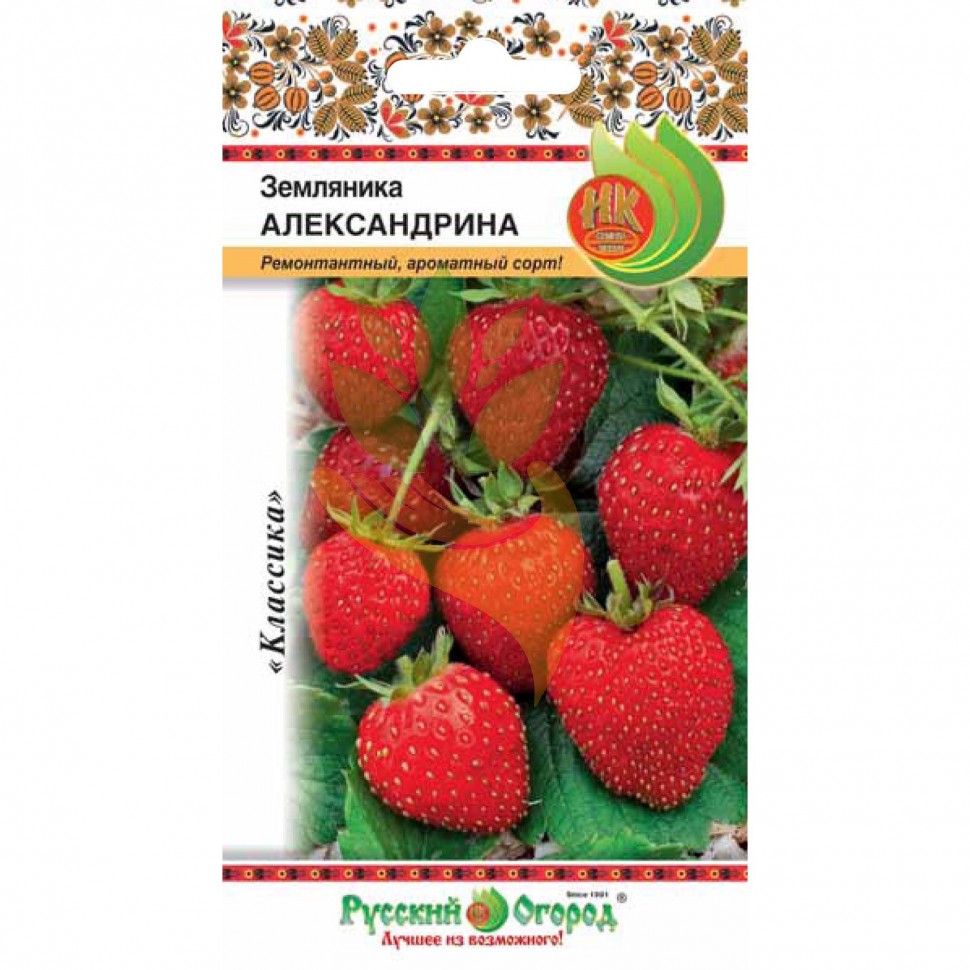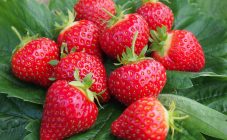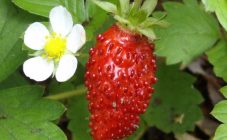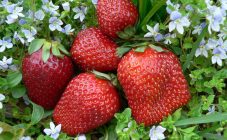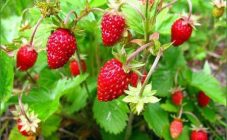Content:
The Alexandrina strawberry is a popular perennial crop and is classified as a remontant, whiskerless variety, mainly with small fruits, which is perfect for growing at home, as well as in flower beds and flower beds. Often this culture is preferred in landscape design. Reproduction of this strawberry occurs by seeds, as well as by dividing the bushes.
The history of the creation of the variety
The strawberry Alexandrina, or, as many call it, small-fruited strawberry, has been familiar to summer residents and gardeners for over 25 years. The variety was created in the Siberian Research Institute of Horticulture named after I. Lisavenko.
Despite the fact that the variety was bred back in the 90s, the culture was entered into the State Register only in 2009, at the same time it began to spread throughout the West Siberian region.
Description
Since the strawberry Alexandrina is a remontant variety, the culture is distinguished by such features as multiple flowering, as well as fruiting throughout the season. Unlike garden varieties, remontant strawberries begin to bear fruit in the second half of May, and ends in late autumn, when the first frosts come.
In height, the bushes of this culture reach an average of twenty centimeters, while whiskers do not form during growth. Strawberry leaves are distinguished by a bright and pronounced green tint with slightly jagged edges. Strawberry blooms with white flowers with small rounded petals. After flowering, berries begin to form, which are relatively small in size and a conical, slightly oblong shape, which sharply sharpens towards the top of the berry. The average weight of one strawberry is about 8 grams.
As for the shade, like many varieties, the berries are bright red, with quite noticeable seeds. The pulp of the culture of this variety has a pronounced strawberry taste, while it has a sweet and sour taste when ripe.
The remontant strawberry Alexandrina is considered a very productive remontant variety, it is characterized by several waves of fruiting, which will delight with beautiful and tasty berries throughout the summer, until the onset of frost.
With proper care, about 500 grams of berries can be grown from one bush, which are distinguished by an excellent and rich taste, as well as quite miniature in size. The propagation of this strawberry takes place only with the help of seeds.
Another important point is that this culture is resistant to temperature extremes. It is thanks to this that such a variety can be grown in many regions of Russia.
Adult Alexandrina bushes reach an average of about 15 centimeters in height. Flowering begins in early May, and fruits appear already at the end of this month or early June. Strawberries bear fruit until October, which makes this variety very attractive to many gardeners. The fruits are oblong in shape and, when ripe, acquire a bright red hue, over time, the strawberries become darker in color and acquire a sweet taste.
Features of planting and care
The Aleksandrina strawberry variety is distinguished by its relatively high frost resistance, therefore it is preferred in the West Siberian region of Russia.
Strawberries of this variety are grown from seeds, care for them after germination is required carefully, while breeding by dividing the bushes is possible. When grown from seeds, care consists in making thin sprouts more stable and stronger, for this they are supplemented with phytolamps, sprinkled with a special substrate. Water the plants regularly; warm water is best for this.
As soon as 2-3 leaves are formed on the plants, they immediately dive into separate pots, in which the strawberries are grown for another two weeks, only after that they are again transplanted into large containers or onto a plot. Before planting seedlings, they are hardened and the land is cultivated. The most optimal place for planting strawberries is considered a not too sunny area.
Since the plants of this variety are quite spreading and tall, it is imperative to plant plants rarely when planting. As soon as the first peduncles appear on the strawberries, they must be carefully removed. This is done so that the plants can get stronger in the right way. At the end of summer, it is imperative to remove the reddened leaves.
As for watering, it is recommended to water strawberries no more than twice a week, but this should be done abundantly. In addition to watering, the culture must be fertilized. For this, a solution of humus, bird droppings, as well as various ready-made dressings, which are based on organic substances, are suitable.
As practice shows, despite the fact that Alexandrina strawberries are considered an unpretentious crop, if you do not provide it with the necessary care, then you will not be able to get the expected harvest.
Therefore, the following conditions must be met without fail:
- the soil must be fertile and kept loose;
- the area on which strawberries grow must be constantly ventilated;
- plants must be provided with all the necessary nutrients, otherwise the berries will be sour and small;
- strawberries should be watered regularly, but not too abundantly.
Advantages and disadvantages
Alexander's variety is in great demand among gardeners, strawberries have a huge number of advantages, which include, first of all:
- the ability to bring several harvests in one season;
- preservation of shape during cooking;
- pleasant taste;
- excellent preservation on the bush;
- frost resistance;
- resistance to pests and diseases;
- the presence of bright and beautiful leaves, which makes it possible to grow a crop even for decorative purposes.
Despite the fact that this strawberry has many advantages, it also has disadvantages.
The main ones are:
- the absence of a mustache, as a result of which it is possible to grow remontant strawberries Alexandrina only from seeds or by dividing a bush;
- medium drought resistance;
- slight tendency of plants to fungal diseases.
This is where the disadvantages of this variety end.
With proper care, you can avoid problems with fungal disease. To do this, it is required to follow the seedling planting scheme, as well as to provide optimal conditions for airing the plants.
Strawberry Alexandrina is rightfully considered a variety that is suitable for growing even for novice gardeners and summer residents. With fairly simple care, you can get a rich harvest. Also, this variety is suitable for landscaping the site and the formation of landscape design. These fragrant berries are grown both outdoors and in mini balcony gardens.
